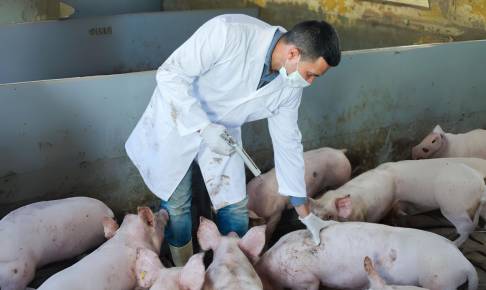New study uncovers rampant antimicrobial resistance in foodborne pathogens
A new study from Michigan State University (MSU) has revealed disturbing trends in antimicrobial resistance (AMR) in foodborne pathogens, specifically Campylobacter jejuni, a common bacteria often traced to chicken or cattle. The research underscores the pressing issue of antibiotic resistance, providing a detailed view of the problem within the state of Michigan, USA.
Leveraging the power of whole genome sequencing (WGS), the scientists were able to explore and understand the magnitude of this growing concern. They also managed to pinpoint the origins of the antibiotic-resistant strains, tracing them back to their animal hosts with remarkable accuracy.
In collaboration with the Michigan Department of Health, a forward-thinking surveillance system was established for campylobacteriosis, a disease caused by C. jejuni, between 2011 and 2014. Researchers analyzed 214 out of 217 collected isolates of the bacteria from infected patients. The results were alarming: 63.1% of the examined strains showed genetic resistance to at least one antibiotic.
This study is groundbreaking due to its ability to trace back resistant strains to their sources. It stands out in its capacity to answer critical questions such as: Did the strain originate from a particular animal? Was it capable of crossing species boundaries? The answers were traced with precision, revealing that most cases of campylobacteriosis in Michigan were linked to chickens or cattle, thus spotlighting the role of these animals in spreading these harmful pathogens.
Another significant revelation from the study was the pronounced connection between cases of campylobacteriosis and rural areas. This correlation suggests that farm animals may unknowingly be vectors, contributing to the spread of these antibiotic-resistant bacteria. This serves as a stark reminder that even rural areas are not exempt from this hidden menace.
By narrowing their focus on Michigan, the researchers were able to uncover unique insights about how the state's particular blend of ecological and agricultural factors could influence the survival and proliferation of these foodborne pathogens. It underlines the importance of considering local factors in the fight against these microbial threats.
The research was made possible through a grant from the Michigan Sequencing Academic Partnership for Public Health Innovation and Response (MI-SAPPHIRE), awarded by the Michigan Department of Health and Human Services and supported by the U.S. Centers for Disease Control and Prevention (CDC). This partnership exemplifies the critical role of collaborative efforts in addressing emerging health threats.
This study accentuates the urgency of understanding the complex interconnections between humans, animals, and antibiotics. Moreover, it underscores the importance of proactive surveillance, comprehensive research, and strategic partnerships in our shared mission for safer food and a healthier future.
Sources:





















